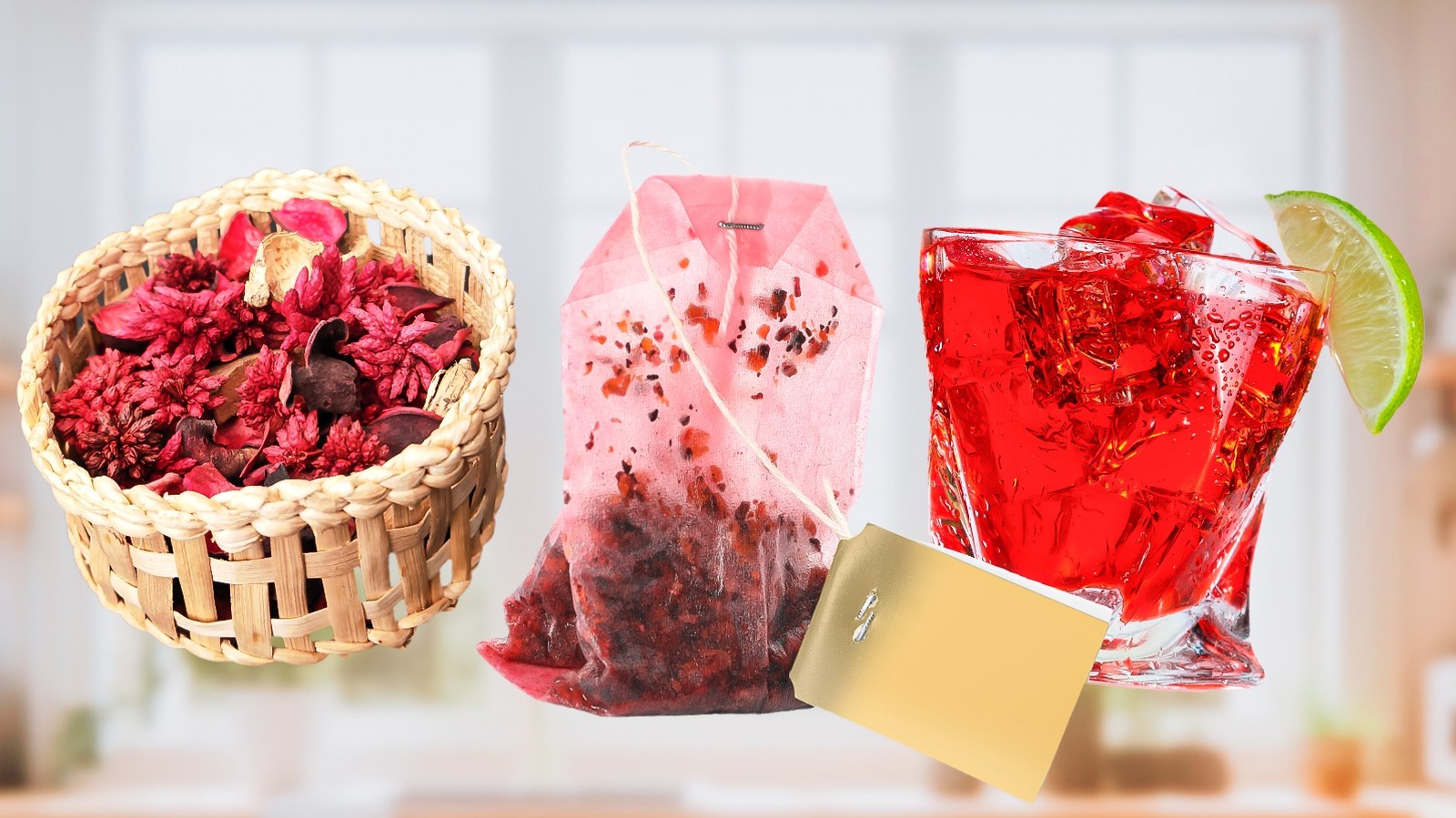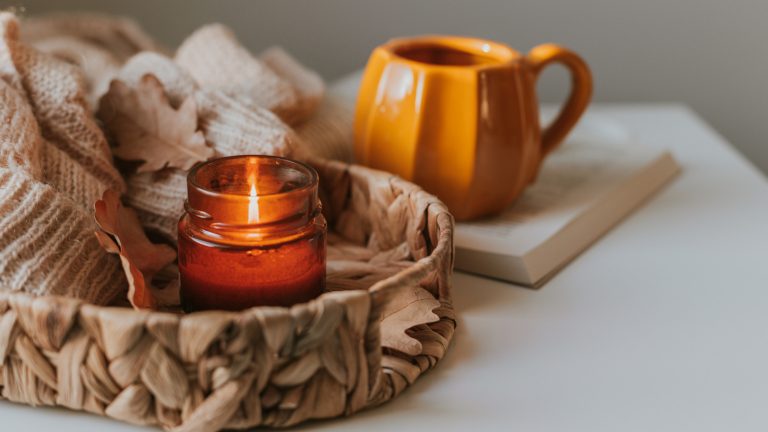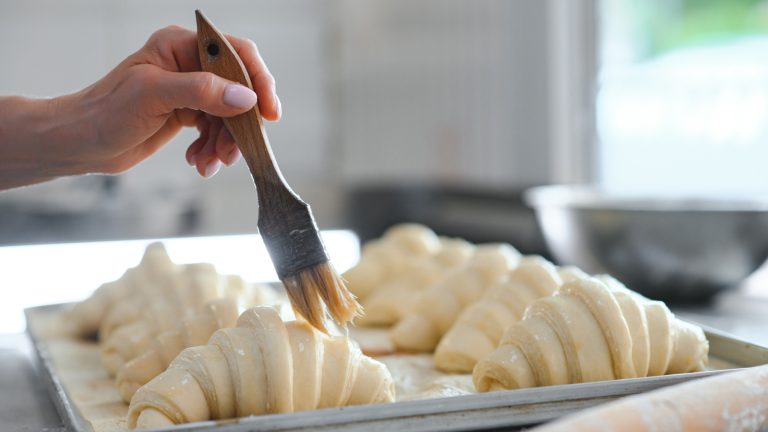There’s nothing quite like relaxing with a steaming mug of tea. Maybe it’s part of your morning ritual, a post-lunch essential, or your go-to during the bedtime wind down. However and whenever you take your tea, you’re likely brewing it with a tea bag. And, more often than not, these bags simply get tossed into the trash after one use. It most definitely doesn’t have to be that way, however. Tea bags are in fact surprisingly versatile, with their uses extending far beyond brewing your beloved mugful.
Hold on to your used tea bags, and you’ll find there are countless ways to repurpose them. Once they’ve done their time in your mug, store them in a sealable plastic bag in the freezer, or dry them out completely in the oven, so they’re ready for round two. Soon, they’ll be serving as valuable tools for cleaning and deodorizing, helping you with your creative endeavors, or even giving your favorite liquor a new lease of life. If you’re an avid gardener, used tea bags will come in handy here, too, whether you’re tossing them on the compost heap, or scattering the leaves over soil. Intrigued? Look no further. Read on and we’ll show you the many ways to make the most out of the humble tea bag.
1. Add them to your compost pile
Creating your own compost is a pretty satisfying process, helping to minimize food waste and turning it into a nutrient-rich, soil-like substance that’ll help your plants flourish. Common additions to a compost pile or bin include fruit scraps, veg peels, and egg shells, though meat is a no-go. But did you know that used tea bags can also join the compost party? Tea leaves contain multiple beneficial nutrients, including nitrogen and potassium, which makes them an excellent source of plant food.
Depending on the exact type of tea bag, you may need to remove some elements of the bag before tossing it into the compost pile. For example, some bags contain staples or adhesives to seal the tea leaves inside, which cannot break down naturally. If the bag itself is made from paper, this part is fully compostable, as is the string. However, some bags do contain a type of plastic called PET, which cannot go on the pile. Be sure to check the packaging of your specific tea for information on this. If required, simply cut away the non-compostable parts and throw these in the trash first. If in doubt, you can always open the bag and scatter just the tea leaves themselves onto your compost pile. If the bag is good to go as is, always squeeze out the excess moisture before composting. You can also cut a few small holes in the bag to help the composting bacteria get inside.
2. Add them to a simmer pot
If you haven’t experienced the joy of a simmer pot, you’re missing out. This all-natural, comforting concept promises to leave your home smelling incredible. Essentially, an array of aromatic ingredients are added to a large pot of simmering water, with everything is left to bubble away for as long as you desire. This fills the air with a fragrant steam, serving as a chemical-free air freshener.
Popular simmer pot additions include citrus slices or peels, cinnamon sticks, fresh ginger, apples, herbs, and lavender. You can also incorporate a few drops of your favorite essential oil. Something that’s often overlooked, however, is tea. While classic black tea bags can absolutely be added to the pot, we recommend opting for something with a punchier aroma. Used chai, chamomile, or peppermint tea bags would all work fantastically. One to two bags per pot should be enough to release a subtle, calming fragrance into the air. Pair the tea bags with a medley of other aromatics for a more complex, well-rounded scent.
3. Infuse your bath water
Putting used tea bags in your bath might feel somewhat strange, but it might just make you feel amazing. According to Bruu, bathing in tea can help to reduce inflammation in the skin and relax your muscles, with the antioxidant-rich tea leaves even boasting anti-aging properties. You don’t have to stick to black tea here, since there are plenty of different varieties to choose from. Green tea is another great choice, known, for its detoxifying effects, while chamomile is sure to leave you feeling calmed.
To create a relaxing tea bath, just pop as many tea bags as desired into your warm bath water. Two or three is a good place to start. You can of course combine these with other bath-friendly add-ins such as Epsom salts, dried herbs, lavender, or flower petals. Another option is to cut open the tea bags and transfer the leaves into a slightly larger, sealable cheesecloth bag, along with your other aromatic ingredients. This will then serve as a sort of jazzed up tea bag, floating in the bath and infusing the water with a medley of sweet-smelling goodies. This way, you won’t have to worry about clean up, or have the annoyance of bits getting stuck to you!
4. Keep your shoes smelling fresh
When your shoes are in need of a refresh, tea bags are the answer. Your everyday black tea contains a high concentration of compounds called tannins, which contribute to the color and flavor of the brew. These also have anti-bacterial properties, which means the humble tea bag is particularly effective at killing the odor-causing bacteria that’s often lurking in our shoes.
For this technique, you’ll need the teabags to be moist. You can either use them straight from the mug, or re-steep used bags in boiling water for a couple of minutes. Simply remove two tea bags from the water and let them cool slightly until they’re comfortable to handle. Then, place one bag into each shoe, and let them sit for at least an hour. If you’re dealing with a particularly potent pair of shoes, you can always add multiple tea bags along the length of the shoe. As the tannins penetrate the material, they’ll get to work eliminating bacteria and odors, leaving your shoes smelling fresh. Always ensure the shoes are completely dry before wearing them again (you can always speed this up by giving them a quick blast with a blow dryer).
5. Grow seeds in them
Another top tip for the plant lovers out there is using tea bags for all of your seed-sprouting needs. Yes, something as simple as a used tea bag can provide a highly effective medium on which to grow seedlings. Thanks to that thorough dunk in boiling water, the bag is suitably sterilized, and also contains essential nutrients that’ll help the seedling to flourish.
To start, grab a large plastic seedling tray, and line this with paper towels. The tea bags should be wet here, so either opt for recently used and cooled bags, or re-wet older ones. Arrange the tea bags onto your lined tray, leaving about a 1-inch gap between them. Then, carefully make a cut in each bag to open it up. You can now tuck a seed inside each bag. To keep the seeds healthy, you’ll need to keep the kitchen paper and tea bags moist. You can use a misting bottle to do this. Other than that, it’s a simple case of popping the tray in a warm area and waiting patiently.
Once the seeds begin to sprout, you can transfer the seedling (complete with tea bag), into a soil-filled pot to continue its growth. The tea bag with eventually decompose, providing added nutrients to the soil. The potted seedling can later be planted in the garden if conditions allow.
6. Make your windows sparkle
We’ve learned that the tannins found in tea boast anti-bacterial properties, but they can also benefit your household cleaning in another pretty nifty way. Ditch the chemical-laden glass cleaner because tea bags can help you achieve sparkling, streak free windows and mirrors. According to Big Heart Tea, tannins are a “natural shining agent,” which is exactly why tea is so effective at cleaning glass.
Just take three or four used tea bags (black, green, or any type of tea that contains tannins is suitable), and steep them in a cup of freshly boiled water for 10 minutes. Next, you’ll remove the tea bags, and transfer the tea-infused water into a spray bottle. Using a funnel can help you to avoid spillage here. Now, your glass cleaner is ready to use. Just spray it directly onto the surface you’d like to clean, and wipe with a cloth or some kitchen paper to reveal that perfectly shiny finish.
7. Freshen up your carpet
Another place where the deodorizing effects of tea can shine is on your carpets. For this hack, you’ll be using the tea leaves only, so you can break open and discard the bag itself. It’s also essential that the leaves are completely dry here, since you’re going to be scattering them all over your carpet, and we don’t want to cause any staining. Once the leaves are nice and dry, scatter them over the areas of carpet that are in need of a refresh. You will of course need to amass a fair few teabags if you’re looking to cover a large area, but perhaps there’s a particular problem area, or smaller rug you’re looking to target.
Let the leaves sit for about an hour. During this time, they’ll release some of their natural deodorizing compounds, freshening things up beautifully. After this time, you can simply vacuum them up, and give the carpet a sniff test. You should notice that any unwanted odors have greatly diminished.
For extra freshening power, try sprinkling some baking soda onto the carpet along with the tea leaves. This pantry staple has many applications in the realm of cleaning, and it’s another powerful natural deodorizer. You can mix it with a few drops of essential oil to give your carpet a pleasant scent.
8. Use them as a garden fertilizer and pest deterrent
While the nutrient-rich nature of tea bags makes them a valuable addition to your compost pile, you can also add them directly to soil, where they’ll act as an effective fertilizer. The tea’s nutrients, which include phosphorus, potassium, and nitrogen, will gradually release into the soil. This helps the soil to retain moisture and creates a fertile environment for plants to grow. However, since tea is acidic, this will lower the pH of the soil somewhat. You should therefore only use the tea in areas where you’re growing acid-loving plants such as hydrangeas, magnolias, or rhododendrons.
What’s more, used tea bags can also help to keep pests away from your plants, without the need for any harsh chemicals. In an interview with The Northern Echo, gardening expert Chris Ware explained that, “The strong scent of tea is unappealing to slugs and snails, making it an effective deterrent.” He advises popping the tea bags close to flower beds, or anywhere that fruits of vegetables are growing, and covering them over with a light sprinkling of soil. Additionally, placing used tea bags onto unwanted weeds can be a great, all-natural way to inhibit their growth.
9. Create some artwork
It’s time to get crafty, because those used tea bags might just be the key to creating your next masterpiece. If you’ve ever had the misfortune of spilling tea on an absorbent surface, you’ll know it can leave a pretty hard-to-shift stain. But it’s this quality that makes tea the perfect medium for painting with. You’ll need to prep your “paint” in advance for the best results, here. Just pop three to four bags into half a cup of freshly boiled water, and leave this to steep for at least 2 hours. The water should be cooled, and nicely tinted. Of course, the exact color will depend which type of tea you go for. Black tea will help you create that classic golden brown tea-stained look, while fruity berry teas can produce gorgeous shades of pink or purple.
Once your tea has brewed, remove the bags, grab some paint brushes and paper, and get experimenting. The effect will similar to that of watercolor, with soft, light brush strokes that can be layered up easily. If a more abstract look is what you’re going for, you could even use whole tea bags to create your artwork. Resoak the bag, squeeze out the excess moisture, then apply it to your paper or canvas in a stamping motion to create a unique textured effect.
10. Degrease dirty dishes
Nobody likes scrubbing dirty dishes, and thankfully, there’s something that can make this job easier. That’s right, you can put used tea bags to work as grease-busting, dishwashing agents, and they do a remarkably good job. When you’ve finished cooking, place your used dish, pot, pan, or tray in the sink, and fill it with warm water. Add a tea bag (or perhaps two or three if it’s a larger piece of cookware), and leave everything to soak while you enjoy your meal. When you’re busy tucking into your dinner, the tannins in the tea bags will begin the clean up process for you, helping to lift grease and grime.
When you return, you should find that any residual, baked-on grime comes away with the swipe of a sponge. Alternatively, you can use a wooden spoon to dislodge it. There should however be very little elbow grease liquid, since those tannins have already done such a great job of cutting through the dirt. Your clean-up time should therefore be significantly shortened, giving you more time to relax.
11. Deodorize your fridge
We’ve covered shoes and carpets, but let’s not forget the fridge. This is another place in our homes where unwanted odors can lurk, but used tea bags can help you to keep such smells at bay. There are a few reasons why your fridge might not be smelling so fresh. If you’ve accidently stored leftovers in there for longer than intended, or let condensation build up, your fridge might be hosting some odor-causing bacteria or mold. Or perhaps it’s a pungent food that’s causing the issue, such as a strong cheese, or some particularly garlicky leftovers. And if, after giving your fridge a thorough clean, those smells are still sticking around, it’s time to bring out the tea bags.
This hack is remarkably simple. Once you’ve accumulated a handful of used teabags (no need to dry them first), pop them into an open container. A bowl, mug, or plastic food container will work great. Put this in your fridge, and let the tea bags get to work. Over time, they’ll start to absorb any lingering odors. Soon, every time you open the fridge door, you’ll be marveling at the freshness. To maintain the effectiveness of this deodorizing method, replace the tea bags every three or four days. It’s a great way to continually repurpose your bags post-brewing!
12. Infuse liquor
Though a steaming mugful is hard to beat, tea can certainly be used to infuse cold drinks, too, including alcoholic ones. Tea is fact a rather popular ingredient in cocktail making. Bags or leaves are often brewed in water as usual, with the tea then cooled and combined with other ingredients. But another easy technique is to infuse a specific liquor with the tea bags. This way, you won’t have to water down your cocktails quite as much to notice that distinct tea flavor coming through.
First, choose your liquor. Spirits such as whiskey, vodka, gin, or rum will all work fantastically. Pour two cups of liquor into a jar or bottle, and add five used tea bags. These could be classic black or green tea bags, or ones with a fruity, spicy, or herbal flavor. Seal up the container, and let the tea steep for at least 12 hours, or more if desired. When you’re ready to use the infused mixture, just remove the tea bags, and add it to your drinks as usual.
You can also opt for used, de-bagged tea leaves here if preferred. Add 2 to 3 tablespoons of the loose leaves to the liquor, shake well to combine, then leave to infuse in the same way before straining.





